This Homemade White Bread recipe is soft, delicious, and easy to make. It’s buttery on the outside, fluffy on the inside, and makes the best sandwich bread or breakfast toast.
I will show you how to make homemade bread, step by step, that you’ll be making again and again. If you’re looking for more bread recipes, you might also like this Homemade French Bread, Herb Focaccia Bread, Whole Wheat Bread, or this Cheddar Cheese Loaf.
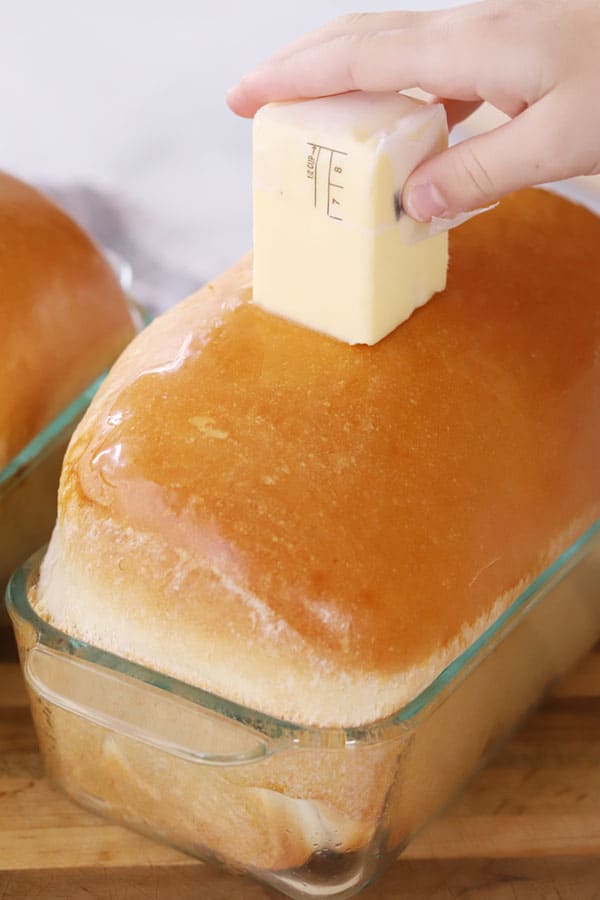
Soft Homemade White Bread
Once you’ve made your own Homemade White Bread, it’ll be hard to ever look at store-bought loaves the same. This makes the best soft bread recipe, fluffy loaves that bake up nice and tall and fill your entire house with the most amazing smell.
Email This Recipe
Get a link to this recipe emailed so you can save it for later + get all the latest Carefree Kitchen recipes!
By submitting this form you consent to receive emails from The Carefree Kitchen
We’ve provided step-by-step instructions to help you make perfect loaves every time, whether you have a stand mixer or not. With this recipe, and just a few basic ingredients, you’ll be well on your way to basking in heavenly, buttery fresh baked bread aroma any old time you want.
If you’re looking for a little something to spread on your homemade bread, be sure to try our Homemade Strawberry Freezer Jam, Whipped Honey Butter, or Garlic Butter.
Homemade White Bread Video Tutorial
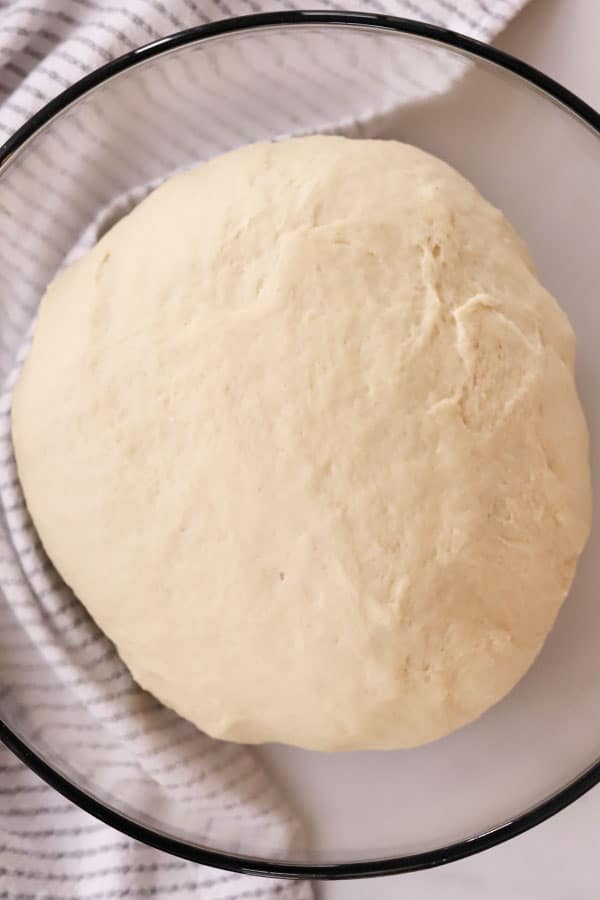
Basic White Bread Recipe Ingredients
- Water – you want your water to be warm (between 95-105 degrees F) in order to help “wake up” your yeast.
- Sugar – you can substitute honey if you’d like.
- Active Dry Yeast – be sure and use active dry for this recipe, or else your mixing, rising and baking times will need to be adjusted.
- Oil – we use avocado oil, however you could also substitute room temperature butter.
- Eggs – any type of large eggs will work
- Salt – salt is incredibly important in both the flavor and structure of bread, so don’t skimp!
- All-Purpose Flour – you can also use bread flour, but you’ll probably need to adjust the amount of flour that you need to add so keep an eye and make sure your dough is looking nice and shiny.
- Egg Wash – we make our egg wash with whole eggs and water.
- Butter – this is brushed on just after baking to give that extra shiny top and yummy buttery flavor.
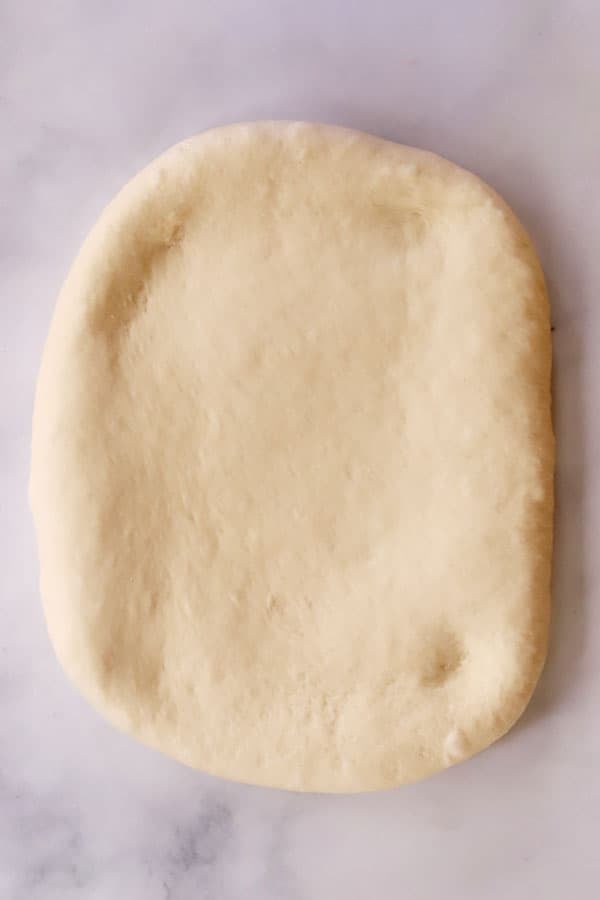
How to Form a Perfect Loaf of Sandwich Bread
Before you form your white bread loaves, you’ll need to grab your loaf pans so that you can see how long you’ll need to shape them. You might as well butter them now, too, if you haven’t already!
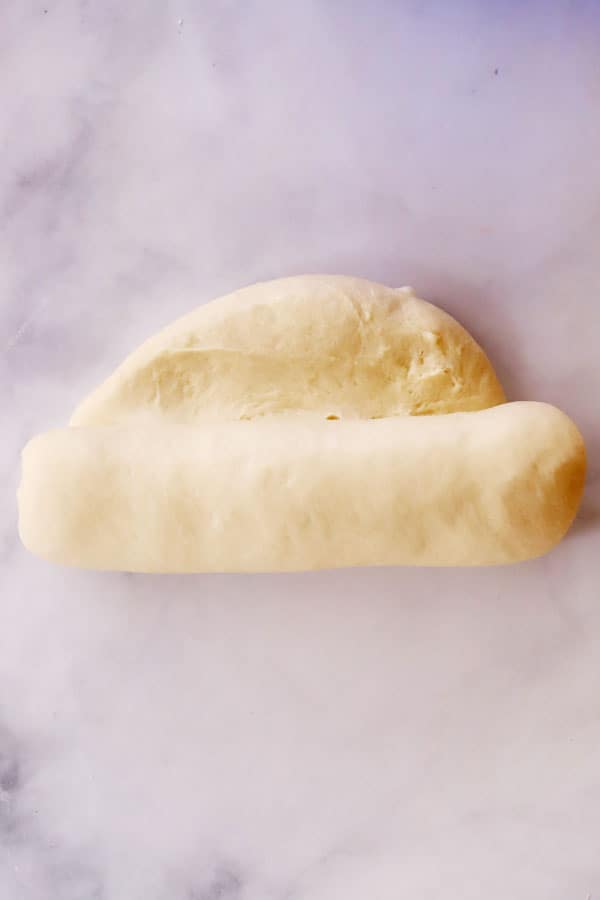
- Divide.
Divide your dough into 3 even pieces. Take each piece one at a time and gently roll them into a rectangle – the shorter end should be about as long as your baking pan, and the longer end should be about 12”.
- Shape.
Once you’ve got your rectangles, you can tightly roll them up and pinch the end to seal the seam up.
- Place onto baking sheet.
Tuck each end of the loaf under and place seam-side down into your greased baking pans.
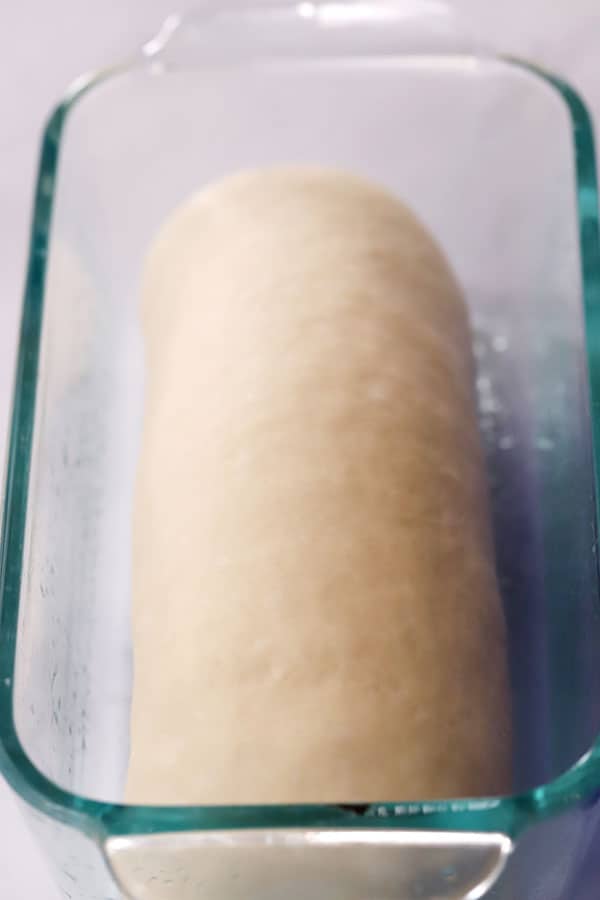
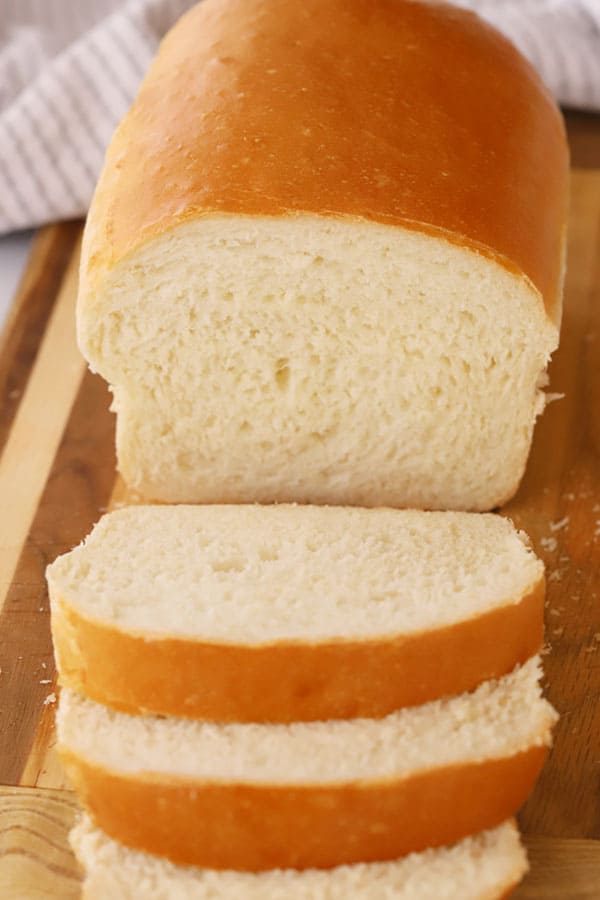
Frequently Asked Questions
Do not let your lack of a standing mixture stop you from making this Homemade White Bread recipe. Place about 7-8 cups of your flour in a circular mound on your countertop (or in a large bowl) and make a well in the center. Add your wet ingredients into the center well and start to press the flour into the well. You are basically trying to mix it all together while avoiding the flour dam breaking and liquid spilling onto your floor!
Continue to mix until it is all combined, and add knead in more flour, about ½ cup at a time, until your dough is nice and shiny and not sticky. Knead on your counter top for about 8-10 minutes, or until the dough is very shiny and elastic. From there, just finish as directed.
There are two main sizes for loaf pans – 9″x5″ and 8.5″ x 4.5.” A good rule of thumb is:
-Use an 8.5″ x 4.5″ size for any bread recipe calling for 3 cups of flour per loaf
-Use a 9″ x 5″ size for any bread recipe calling for at least 3.75 cups of flour per loaf
-For the amounts in between, use your best judgment.
We used Pyrex 1.5 quart glass loaf pans in this recipe, which are closer to the 8.5″ x 4.5″ size. Our recipe calls for about 3 cups of flour per loaf, so this makes perfect sense. If you only have the larger size pan, the recipe will still work but your bread won’t have that nice tall rise.
There are all sorts of other types of bread loaf pans to choose from – metal, non-stick, ceramic, and even silicon. Honestly, they’ll all make great bread! The most important thing is to ensure you use the correct size for your recipe.
When it comes to softer and more tender bread, like this Homemade White Bread recipe, your best bet is to use all-purpose flour. This bread doesn’t need the stronger structure that bread flour will give.
If you don’t happen to have all-purpose flour, your next best bet will be bread flour. It’s much more ideal for more artisan-style bread that is chewier and more dense. But in a pinch, it works.
You’re going to want to avoid using pastry or cake flour. They don’t provide enough structure and won’t make a very good loaf of bread.
There are two main types of dry yeast that you will find at the grocery store – instant yeast (or quick rise) and active dry yeast. Without getting into too much of the science, instant yeast is specially manufactured so that it can just be dumped into your dries and mixed. Active dry yeast, on the other hand, needs to be woken up, or “proofed.”
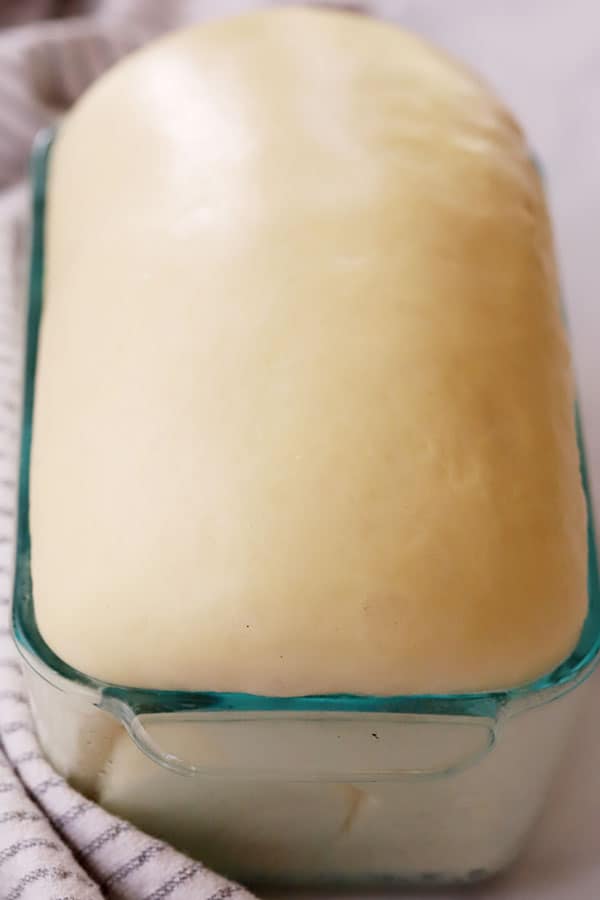
Recipe Tips
- If you are using active dry yeast, proof the yeast. It helps “wake it up” and lets you know ASAP whether your yeast is good.
- Using a standing mixer helps knead your dough properly and keeps your table just a little cleaner!
- Check the size of the bread pans and adjust to the number of loaves accordingly!
- Take the internal temperature of your bread to be sure it’s baked through. It should read 195 degrees F in the center.
- We know it’s hard to resist, but let your bread cool completely before slicing.
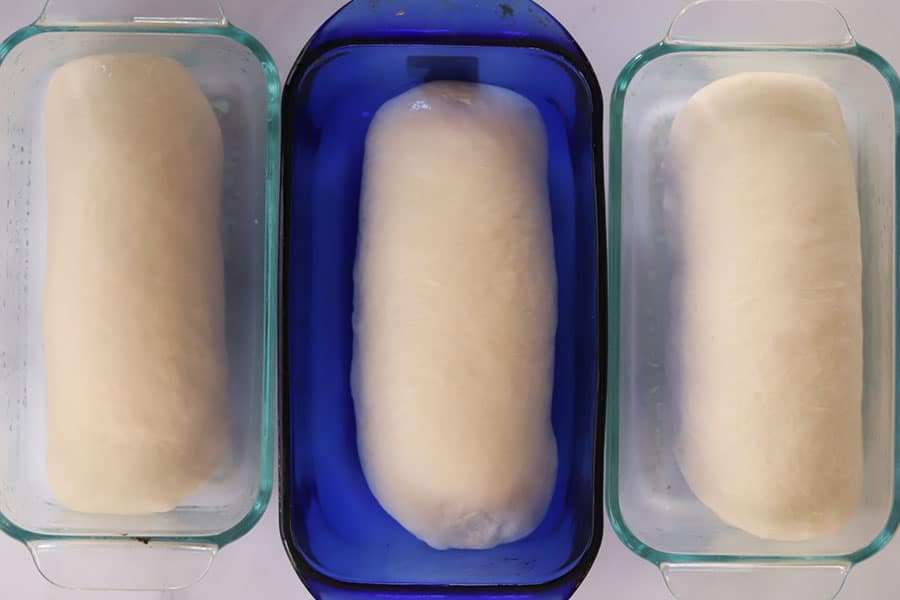
Storing and Freezing Instructions
- In a plastic bag: You can store your bread in an airtight plastic bag for up to 3 days at room temperature. The plastic bag will keep your loaves much softer than if you use a paper bag.
- In a bread box: These went out of fashion once baking bread at home wasn’t quite as common. But if you have one, by all means, use that!
- In the freezer: If you bake more than you’ll be able to use in a couple of days, your best bet is to freeze the rest. Wrap the loaves in plastic, put them in freezer bags, and store them for 3 months. Just pull out and thaw at room temperature as soon as you are ready to use.
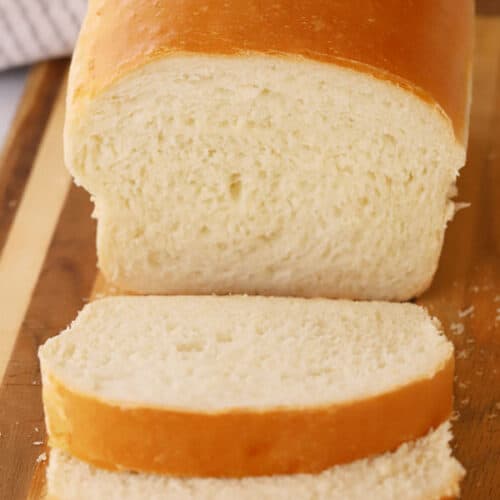
Homemade White Bread Recipe
Ingredients
- 3 cups water, warm (95-110 degrees F)
- 1/4 cup sugar
- 1½ tablespoons active dry yeast
- 1/4 cup avocado oil, or room temperature butter
- 1 tablespoon salt
- 2 large eggs
- 8½ cups all-purpose flour
Egg Wash
- 1 large egg
- 1 tablespoon water
- 2 tablespoons butter, melted
Instructions
- Grease three 8.5" x 4.5" bread pans with butter and set aside.
- In the bowl of a stand mixer, combine the warm water, sugar, and yeast. Mix well, then let sit for 5-10 minutes, or until the yeast is frothy and bubbly.
- Once the yeast has proofed, add the oil, salt, eggs, and half of the flour into the yeast mixture and mix on low using the dough hook until combined.
- Continue adding one cup of flour at a time, then mixing on low speed, until the dough pulls away from the sides and looks smooth. You may need up to 1/2 cup of additional flour. Once all of your flour is added, knead on medium speed for about 3 minutes—it should look smooth and elastic.
- Cover with plastic wrap and let rise in a warm place until doubled—about 30-45 minutes.
- Once your dough has doubled, divide into 3 even pieces. Sprinkle flour on your counter, then very gently roll each loaf into a roughly 8" x 12" rectangle using a rolling pin (the shorter side of the rectangle should be about the length of your baking pans).
- Starting at the shorter end, roll each rectangle up tightly, then pinch the end to seal the seam. Tuck each of the ends under, then place seam-side down into your greased bread pans.
- Whisk together the egg and water and brush a thin, even layer over the tops of each loaf of dough using a pastry brush. Let rise again until doubled in size, about 30-45 minutes.
- Preheat your oven to 350 degrees F. Once your loaves have doubled in size, bake all three at the same time for 28-30 minutes, or until golden brown (an instant-read thermometer should read 195 degrees F when inserted into the center).
- When the bread is done, remove from the oven and brush melted butter over the top of each loaf. Let cool for about 10-15 minutes, then remove from the baking pans and let cool completely on a wire rack before slicing. Enjoy!
Video
Notes
Nutrition
Did you make this?
Don’t forget to leave a rating below and make sure to follow on Pinterest, Instagram and Tiktok for more!
More Easy Homemade Bread Recipes
- Rustic Cheddar Bread
- Honey Wheat Bread Recipe
- Homemade Pretzels
- Pull Apart Garlic Bread
- Einkorn White Bread
- Recipe for French Bread
- Crescent Rolls
- Soft Bites
- Focaccia Bread
- Twist Bread
- Cinnamon Twist
- Garlic Bread
- Cheesy Breadsticks
- Olive Garden Breadsticks
- More Bread Recipes
This simple Homemade White Bread recipe makes the most soft and fluffy loaves that bake up nice and tall and fill your entire house with the most amazing smell. It makes the best sandwich bread, toast or afternoon snack.
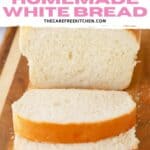



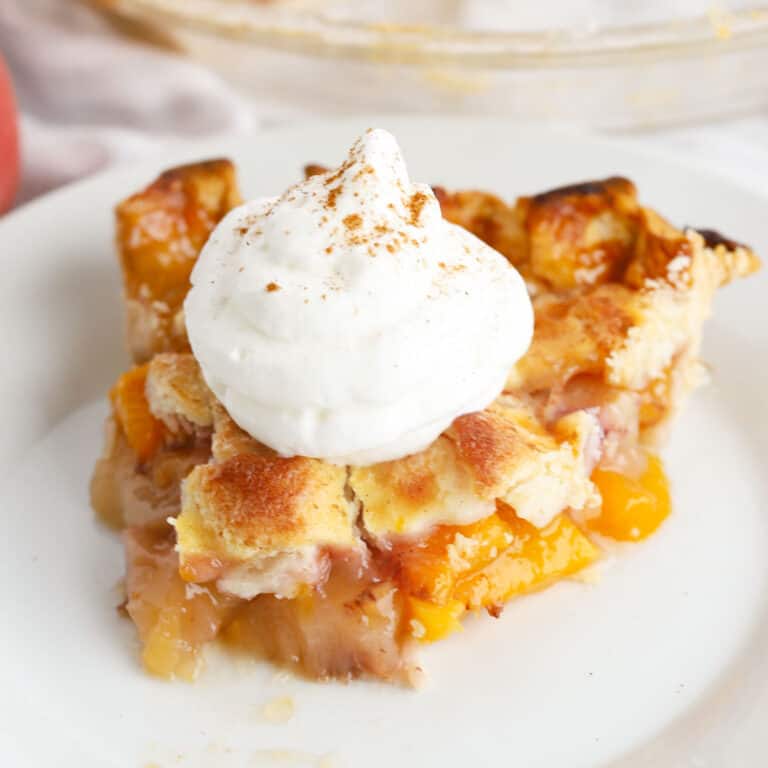
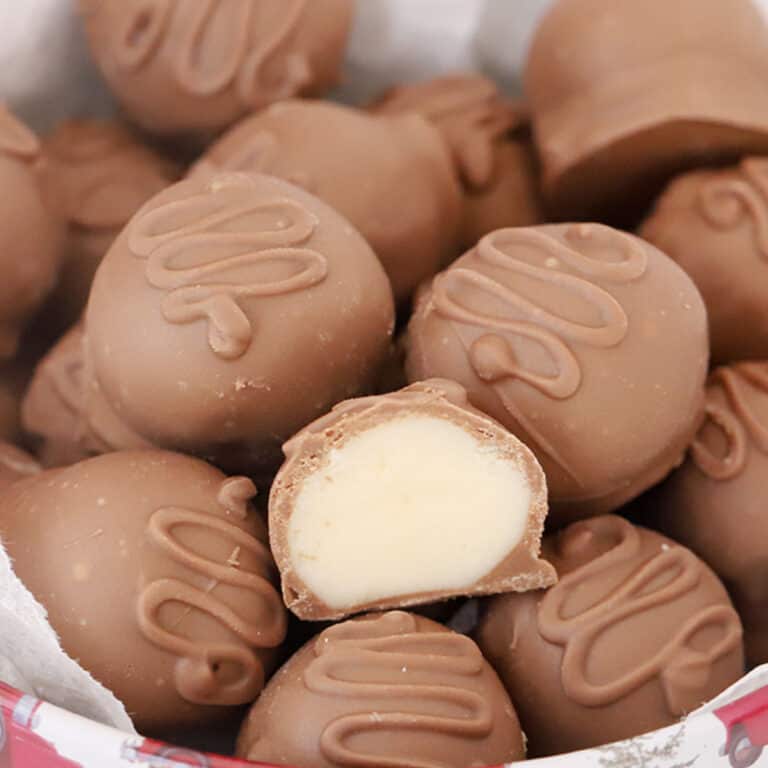
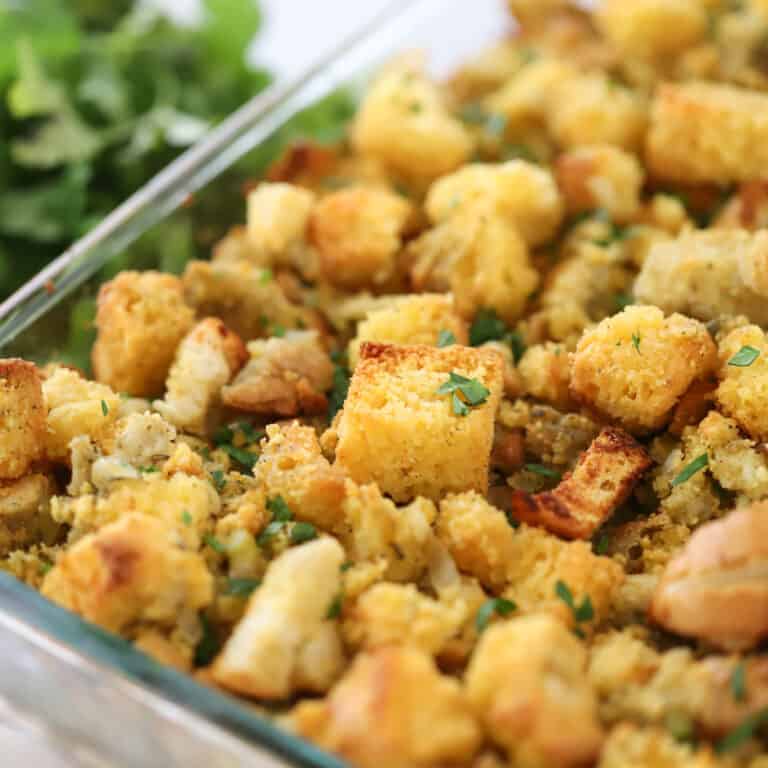
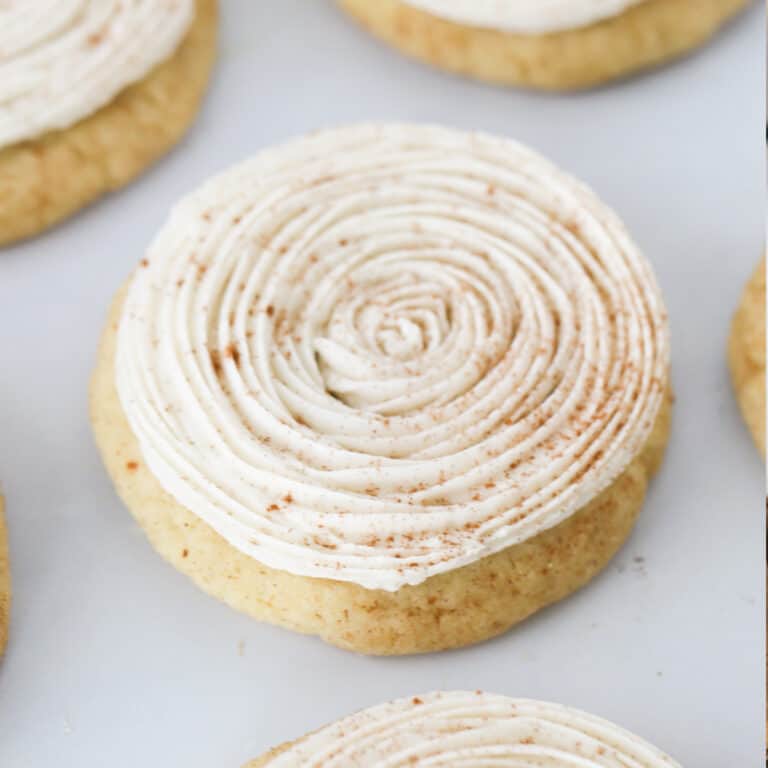
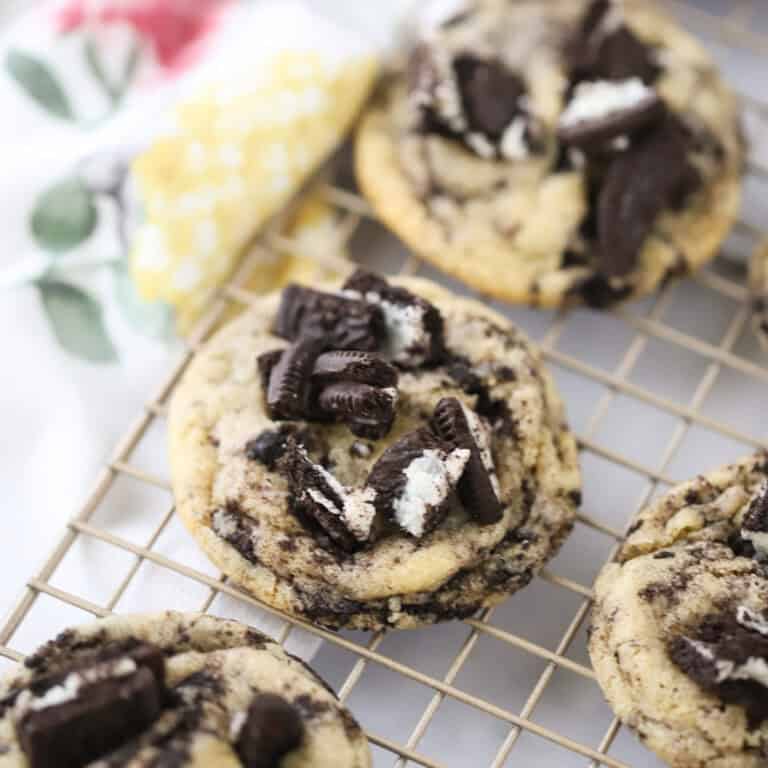
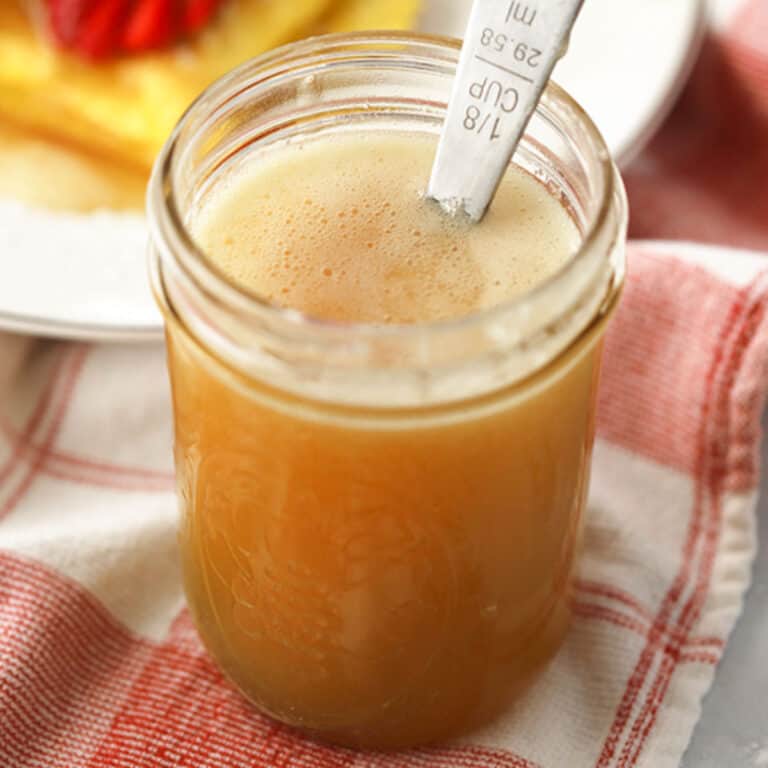

Very easy to follow recipe and video yielding a super soft and delicious white bread! It’s great to know exactly what you’re putting into your body and avoiding store bought preservative-filled breads!
I am A past beginner but not master baker. Love this simple process for this bread. It is fluffy and delicious. 10 out of 10
The best bread ever, I’ve made this bread so many times and it always comes out good. HAS CHANGED MY LIFE FOREVER!
If I only have 2 loaf pans, would it be better to make 2/ 9×5 loaves or 2/10×5 loaves??
Hi! I made this amazing bread and it was wonderful the first day but the second day it was crumbling when I was trying to make a peanut butter sandwich. Can you you please tell me what I did wrong so I don’t make the same mistake again. Thanks in advance.
can you send instructions on how to make cinnamon rasin bread please.
I don’t have a recipe for that yet but I’ll get it on the list of things to make for sure!
Divide all ingredients by 3 and the result wound be what you need for 1 loaf. Good luck.
Second time making this recipe. Best bread I’ve made yet. However, the dough is very wet even after rising, thus having to add more flour. What could I be doing wrong? The bread does come out perfect.
Best bread recipe I’ve ever made! It is my “go to” for special occasions and everyday! My grandkids love the cinnamon raisin and this recipe makes the best dinner rolls ever! I divide my dough I to quarters for smaller loaves and wrap and freeze for later use!
Best Bread ever. Thank you for sharing the recipe.
How much Instant Yeast should I use instead of Active Dry Yeast?
The same amount of dry or active yeast will work!
Wow, best bread ever! HAS CHANGED MY LIFE FOREVER!
This first time I made it, (first time making bread EVER) it was great! The second time, I let my yeast “proof”, it turned out amazing!!
Question: when I thaw the dough out to make dinner rolls with, should I leave it on the counter for a few hours? Or let it thaw out in the fridge overnight?
Thank you so much for the recipe and the video! Both were lifesavers!
You can leave it on the counter for a few hours or in the fridge and then out for 20 min or so before shaping into rolls. You want the dough to come up to room temp so it’s easier to handle and make into rolls.
can you bake one loaf and freeze the rest of the dough? I made this and gave a loaf to my grandma and one to my m-i-l and one for us. everyone loved it but we can only eat one at a time ????
Yes, you bet. Just put it in a ziplock bag and freeze for later. You could also use it to make dinner rolls or pizza dough.
I’ve made this bread a few times now and it is amazing each time!
My Revised recipe*
(I used these ingredient in place of some)
3 cups of whole milk
1/4 cup honey
1/4 cup grape seed oil
1 1/2 TBSP rapid rise yeast
1 TBSP pink Himalayan salt
Sifted the flour once
A M A Z I N G!!!
Which flour is better? I’ve got bread flour and AP white whole wheat flour I could use. Why I’m asking is I’ve had problems w bread being to dense and I can’t stand that texture.
All purpose flour works great for this recipe!
I wish I could also post an image because my bread turned out BEAUTIFUL! The aroma and taste is also very delicious. My husband has been requesting some homemade bread the last few days, and after trying this, he said this recipe is a keeper! He wouldn’t change a thing. He wants me to make some every week. The fact that it makes 3 loafs in one setting is perfect because we go through homemade bread fast!
In case this is helpful to anyone… My water was 107 degrees. I used a brand new jar of Fleischmann’s Active Dry Yeast and let my yeast proof for the full 10 minutes. I used Canola oil in place of Avocado oil. I greased my glass loaf dishes with Canola oil instead of butter. I used 9 and 1/4 cups Bread flour instead of All-Purpose flour. I let my dough rise sitting on top of my preheated oven. I had it already preheated to 350 as I was multi-tasking and making Strawberry Rhubarb Cinnamon Swirl muffins too. 🙂 *Tip: Grease the inside of the plastic wrap. My dough stuck to it, which wasn’t terrible. I was able to easily scrape it off with a rubber spatula, but next time I will still spray it with cooking spray.
Canola Oil is the worst oil you can use for your health. I use nothing but Olive Oil. You can research it if you like. I have not tried this bread yet. I am making it today!
Olive oil will work great. You can also sub the oil for butter too. Both are great alternatives.
If I half the recipe, would it make one 9×5 or 10×5 loaf? Also, if using Instant Yeast, just mix it with the flour, no proofing? Thank you!
Can this white bread recipe be made with other flours like wheat, pumpernickel, rye?
I’ve only tried these measurements with white, all-purpose flour. The principles will be the same, add flour just until the dough starts to pull away from the sides of the stand mixer. Let me know how it turns out!
Should the eggs be at room temperature? the standing mixer bowl warmed a bit? I have the worst time with yeast.
The mixer bowl doesn’t need to be warmed. Room temp is fine. As far as the eggs go, room temp or from the fridge is fine. When a recipe calls for room tempreture eggs, it’s usually because there is melted butter in the recipe and if melted butter cools off and solidifies again, it changes the recipe a little. Cool or room tempreture eggs are great for this recipe.
I´m not a skilled cook and used a mix of flours (a bit of all purpose white and two types of espelta whole wheat) and instant yeast. The bread turned out great! Your instructions on adding batches of flour and when to stop are to me the key to this recipe and I will use this tip from now on.
I also appreciate your instructions on when to “proof” yeast.
So happy I could help!
Can you use any oil
I prefer avocado oil but you can use any cooking oil or even melted butter.
Tried so many bread recipes and all I can say I’ve made a lot of doors tops and wasted a lot of flour
This recipe and method is going it in my favourites book and I will use it again and again thank you so very much
I see you have the nutritional facts on here is that per slice or per loaf?
Can I use almond flour with this bread instead of the regular flour?
Hi. Just love the way your bread looks at the end. Would love to try this recipe but where I live we only get instant yeast. Can I use that ?
Instant yeast will work great too!
Can this recipe be halved?
You bet!
Have you tried using a bread machine to mix the ingredients before baking in the oven. Just curious. New bread machine owner but I love the way the loaves appear when baked in the oven. I can’t wait to try this recipe as is.
I think you’d have to cut the recipe in half for it to fit in the bread machine. I’ve used a bread machine to mix up dough for pizza or just one loaf. It works so good.
Is it possible to get the ingredients in ounces or grams. I would really like to try this recipe but am not in the USA. Thank you
Love this recipe thanks for sharing .
So glad you loved it!
I noticed that the recipe says 350F, and the video says 375F. which one is best for this recipe? Thank you.
Well, I made it with flax egg, even the egg wash was flax egg. I started it at 375°F, and then for the last 9 minutes, I dropped it to 350°F. Turned out perfect. Let cool, sliced the next day. Perfect white bread. I will be using this one regularly. Thank you.
Wow, that sounds amazing! so glad you enjoyed it!
Someone said the recipe calls for the oven temp to be 350° and the video says 375°! Which is it??
Definitely the best bread with great structure. Also tried it with half whole wheat and half all purpose flour and it turned out great! I have also used a covered loaf pan with this recipe to get the sandwich shape and it performed beautifully. Along with eating it as sandwich loaf, I’ve also used it to make bread pudding, croutons, and a homemade stuffing. Delicious!! This is now my go-to recipe for making yeast bread – just shared it with my sister…..
I’m so glad you enjoyed it. Thanks so much for letting me know!
I tried this bread recipe I used butter instead of avocado oil and it is simply the best recipe I have tried so far. So soft and tasty love it
Oh, I bet it’s amazing with melted butter added!
Thank you for this wonderful bread recipe. Question: I made this bread and the next day it was crumbling. do you know why, and how can I prevent that from mapping again?
Homemade bread is always best the day it’s made but if you store it in a plastic ziplock bag or at least a bag with a twist tie, it should keep pretty well for several days.
Thank you! Love your recipes.
Try adding 1/4 t of vitamin c powder. I use this in every bread recipe, including this one. It adds moisture to the loaves.